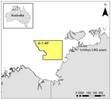 Statoil Petroleum has made a gas discovery in wildcat well 7220/2-1 on the Isfjell prospect in production licence 714.
Statoil Petroleum has made a gas discovery in wildcat well 7220/2-1 on the Isfjell prospect in production licence 714.
The well, the first in PL714, was drilled in about 429m water depth, using the Transocean Spitsbergen semisubmersible drilling rig (pictured), about 40km northeast of the Johan Castberg oil and gas discovery in the Barents Sea, and about 260km northwest of Hammerfest, said the Norwegian Petroleum Directorate (NPD).
The primary exploration target for the well was to prove the presence of petroleum in Middle to Early Jurassic reservoir rocks (the Stø, Nordmela and Tubåen formations). The secondary target was to prove the presence of petroleum in Late/Middle Triassic reservoir rocks (the Snadd formation).
The well encountered a gas column of about 85m in the Stø and Nordmela formations with a reservoir quality ranging from very good to excellent, said the NPD. The Snadd formation was found to have more varied reservoir properties, but is an aquifer.
Preliminary estimations of the size of the discovery are between 1 and 2 billion standard cubic meters (Sm3) of recoverable gas.
The well was not formation-tested, but extensive data collection and sampling have been carried out.
PL 714 was awarded in the 22nd licensing round in 2013. The well was drilled to a vertical depth of 1554m below the sea surface, and was terminated in the Snadd formation. The water depth is 429 meters. The well will now be permanently plugged and abandoned.
The Transocean Spitsbergen will now move to drill wildcate well 7227/10-1 in PL230, also operated by Statoil.



